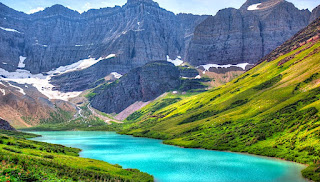Entitled for the remnants of glaciers from the ice age, Glacier National Park is located on the border of Canada and the United States and is often called the "Crown of the Continent" since it sits at the headwaters of the rivers that flow into the Pacific Ocean, the Gulf of Mexico and Hudson Bay. A chosen among hikers, the park geographies a variety of trails for all skill levels, ranging from the easy Trail of the Cedars.
What's additional, the park boasts more than 700 lakes, various waterfalls and two mountain ranges, spread across more than 1 million acres that shelter an array of wildlife. Glacier National Park is a year-round paradise. Gage its heights following trails founded by well-known Swiss mountain guides, take a calm stroll amid moss-draped old-growth cedars or hike through alpine fields strewn with lichen-covered rocks.
After a day’s traveling, sink into an armchair before a roaring fire and steep yourself in the history of Rogers Pass, the final link in the railway that brought Canada together as a nation. Aside from its breathtaking environmental features, it's also home to a fair amount of history. The Going to the Sun Road a scenic, 52-mile drive through the park is a National Historic Landmark and an engineering marvel that offers outstanding views, as well as access to popular hiking trails. Plus, many of the park's lodges, chalets and hotels were constructed by the Great Northern Railway in the early 20th century and are on the National Register of Historic Places. Care to visit a UNESCO World Heritage site? You'll find that here, too: the Water ton-Glacier International Peace Park.




No comments:
Post a Comment